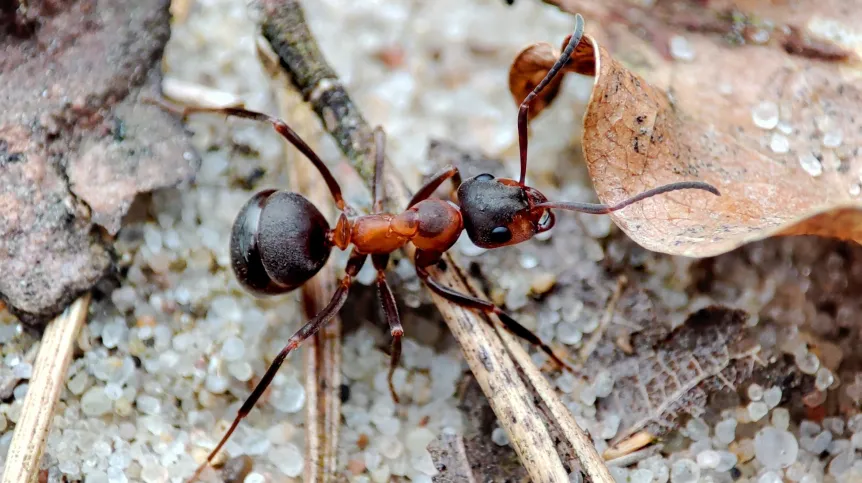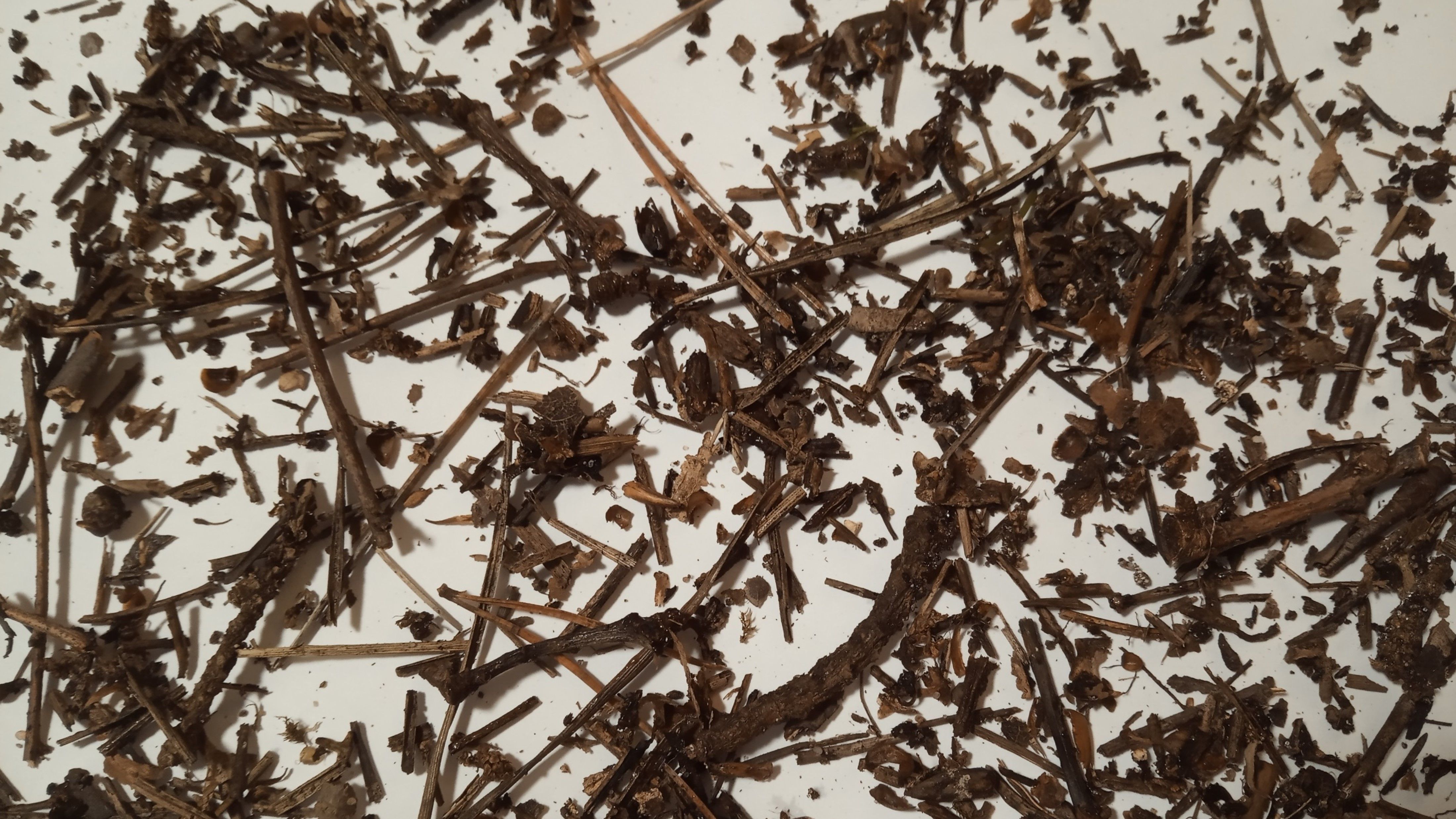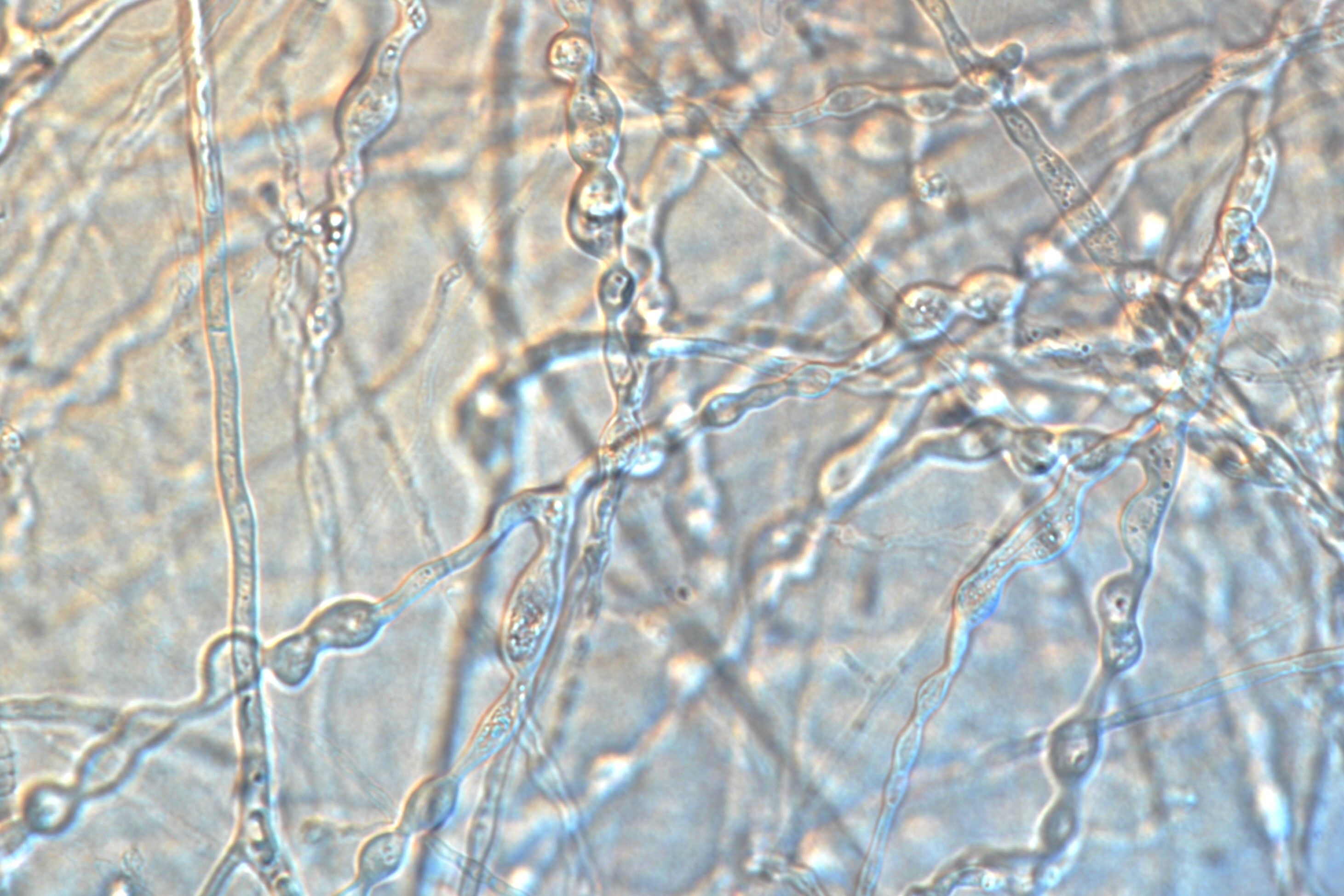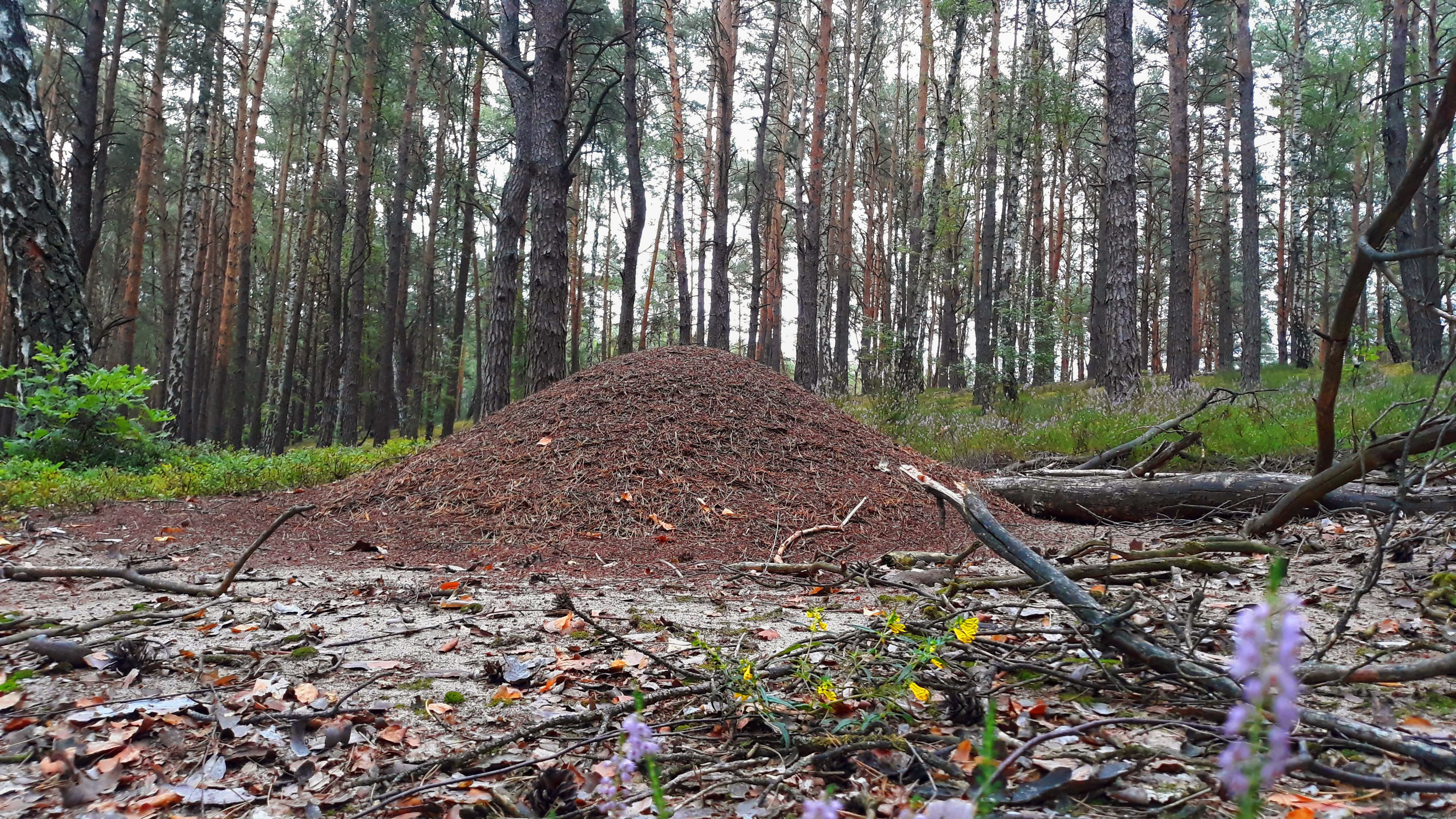
Forest anthills can be 'environmental islands' for fungi, say scientists from the Botanical Garden and the Faculty of Biology at the University of Warsaw, who discovered the presence of a specific group of fungi in the hills of the wood ant, different from those in the surrounding forest litter. The presence of anthills can therefore promote local biodiversity.
different from the surrounding environment in terms of temperature, humidity and the presence of various chemical compounds. These specific conditions result primarily from the attempts of the insects inhabiting them to adapt the nests to their needs.
The conditions that are conducive to the development of ants can also be beneficial for many other organisms, scientists from the Botanical Garden and the Faculty of Biology say.
As they point out, nests of social insects are sometimes inhabited by groups of other organisms adapted to coexist with them. Such organisms may coexist with the owners of the nest in a mutualistic (mutually beneficial), parasitic or commensal relationship, i.e., use the food and shelter available in the nest without a significant impact on the nest inhabitants.

In the temperate climate zone, one of the species that build large, extensive nests is the European red wood ant Formica polyctena. It is one of the common ant species in Poland. It lives in coniferous and mixed forests, where it builds anthills in the form of large mounds, composed mainly of collected pine needles and soil particles extracted during the construction of the underground part of the nest.
The conditions in the anthill of the red wood ant are clearly different from the conditions in the surrounding litter, say the study’s authors Igor Siedlecki, Michał Kochanowski, Dr. Julia Pawłowska, Gabriela Reszotnik, Dr. Alicja Okrasińska and Professor Marta Wrzosek. They point out that for most of the year the temperature in the anthill is higher than outside, even in the middle of winter, usually not falling below zero degrees Celsius. In addition, the anthill maintains an accumulation of organic matter (possible to decompose). There is also a relatively large amount of antifungal and antibacterial substances: resin from coniferous trees collected by the ants and formic acid supplied by them.
The researchers point out that although the red wood ant is a common species, very important for forest ecosystems - it is still unknown what fungi occur in its anthills and how they affect the lives of these social insects.
The authors of the study also draw attention to the mould fungi (Mucoromycota), common in the environment. 'People may associate them with grey-black, fluffy mould on strawberries or bread. They are also an important group in medicine - because they cause diseases called mucormycoses, and in biotechnology, because they are used to produce fatty acids', they report.

The scientists point out that mould fungi present in the environment are much less well known than, for example, the more frequently studied Ascomycota or Basidiomycota. Due to the fact that representatives of mould fungi occur in forest litter and are associated with its decomposition - the authors of the study wondered whether they could also occur in anthills. 'This assumption has not been verified so far. Moreover, even if mould fungi occur in anthills - we do not know whether we can find the same or different species than in the surrounding forest litter', the scientists say.

In collaboration with mycologists from Warsaw University’s Institute of Evolutionary Biology of the Faculty of Biology, the research team wanted to check whether anthills contained a specific group of mould fungi, different from the group present in the litter. For this purpose, they examined and described the group of mould fungi in both environments. They also identified species of fungi associated with the ants' living environment. The research material - fragments of the anthills and the surrounding forest litter - was collected in forests near Warsaw. 'The fungi present in the material were isolated on microbiological media, and then identified based on morphological analysis, supported by molecular identification', the scientists report.
'The results of the study suggest that the fungal community of moulds present in anthills is specific and differs from the community of these fungi in the forest litter. Moreover, representatives of the species Entomortierella lignicola, as well as the Absidia cylindrospora section, turned out to be significantly more frequent in the anthill environment, and representatives of the species Umbelopsis curvata, as well as the Podila verticillata-humilis section, turned out to avoid this microenvironment', the scientists say.

The presence of mould species strongly associated with the occurrence in anthills of the red wood ant is further evidence of the importance of anthills as microenvironments in ecosystems in which various organisms may occur preferentially or be closely associated with ants. The presence of ant nests may therefore translate into a local increase in biodiversity in the environment, the scientists say.
They add that it is currently not known what role the fungi distinguished in the study play in the lives of ants. Initial observations suggest that symbiotic fungi may participate in the decomposition of mound material, which causes an increase in the temperature in the anthill. This, in turn, promotes the development of ants - it accelerates this process.
'In addition, the specific nature of the growth of the mycelium of Entomortierella lignicola representatives, rich in the production of fat-filled, thin-walled, enlarged cells, also suggests a potential nutritional relationship between ants and this species, but this idea remains a hypothesis that requires verification. Further research will help explain the role of these fungi in the lives of ants', the scientists add.
They described all the conclusions from the study in Ecology and Evolution (https://doi.org/10.1002/ece3.70333), in the paper 'Ant's Nest as a microenvironment: Distinct Mucoromycota (Fungi) community of the red wood ants' (Formica polyctena) mounds'.
PAP - Science in Poland
zan/ agt/ kap/
tr. RL













